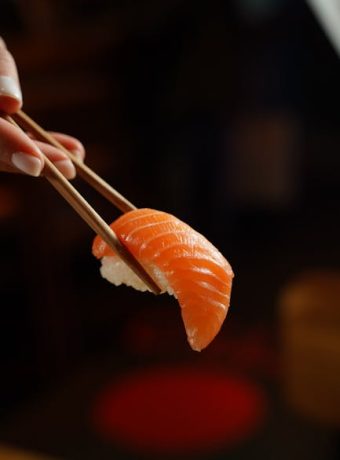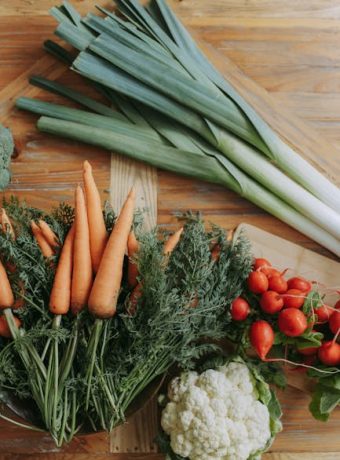Healthy Food in Vietnamese Cuisine: Light and Balanced Options
Vietnamese cuisine is renowned for its vibrant flavors, fresh ingredients, and health benefits. Unlike many other cuisines, Vietnamese dishes often emphasize balance and lightness, making them an excellent choice for those looking to maintain a healthy diet. This blog post will explore some of the healthiest options in Vietnamese cuisine, focusing on dishes that are light, balanced, and nutritious.
Why Choose Vietnamese Cuisine?
Vietnamese food is celebrated for its use of fresh herbs, lean proteins, and minimal oil. According to a study published in the National Center for Biotechnology Information, traditional Vietnamese diets are associated with lower rates of chronic diseases such as obesity, diabetes, and cardiovascular issues. The cuisine’s reliance on fresh, unprocessed ingredients and its diverse array of vegetables make it a healthy choice for anyone.
Key Ingredients in Vietnamese Cuisine
Understanding the core ingredients in Vietnamese cooking can help you make healthier choices. Below are some essential components that contribute to the nutritional value of Vietnamese dishes:
Fresh Herbs
Herbs like cilantro, mint, basil, and lemongrass are staples in Vietnamese cuisine. Not only do they add a burst of flavor, but they also offer numerous health benefits. For example, cilantro is rich in antioxidants and has been shown to reduce anxiety and improve digestion.
Rice and Rice Noodles
Rice and rice noodles are the backbone of many Vietnamese dishes. They are gluten-free and provide a good source of energy. Opt for brown rice when possible, as it contains more fiber and nutrients compared to white rice.
Fish Sauce
Fish sauce is a fermented condiment made from fish and salt. It is rich in essential amino acids and vitamins, including B12. While it is high in sodium, using it sparingly can add depth to dishes without compromising health.
Lean Proteins
Vietnamese cuisine features a variety of lean proteins such as shrimp, chicken, and tofu. These proteins are often grilled or steamed, making them a healthier alternative to fried options.
Healthy Vietnamese Dishes to Try
Now that we know the key ingredients, let’s dive into some specific dishes that are both delicious and nutritious.
Pho
Pho is a traditional Vietnamese soup consisting of broth, rice noodles, herbs, and meat, usually beef or chicken. It is low in fat and high in protein, making it a well-balanced meal. The broth is typically made by simmering bones, which releases collagen and minerals beneficial for joint and skin health.

Goi Cuon (Fresh Spring Rolls)
Fresh spring rolls are another excellent choice. These rolls are made with rice paper and filled with shrimp, lettuce, herbs, and vermicelli noodles. They are often served with a side of peanut or hoisin sauce. Goi Cuon is low in calories and high in protein and fiber, making it a perfect light snack or appetizer.

Bun Cha
Bun Cha is a dish of grilled pork served with rice noodles, herbs, and a dipping sauce. The pork is marinated in a mixture of fish sauce, sugar, and other spices before being grilled, giving it a smoky flavor. This dish is high in protein and offers a good balance of carbs and fats.

Ca Kho To (Caramelized Fish in Clay Pot)
Ca Kho To is a traditional dish made by caramelizing fish in a clay pot with fish sauce, sugar, and spices. The fish is often catfish, which is high in omega-3 fatty acids and protein. The caramelization process adds a rich, deep flavor without the need for excessive oil.

Actionable Tips for Healthier Vietnamese Cooking
If you’re inspired to try cooking Vietnamese dishes at home, here are some tips to keep your meals healthy:
Use Fresh Ingredients
Always opt for fresh vegetables, herbs, and proteins. Fresh ingredients not only taste better but also retain more nutrients.
Limit Sodium
Fish sauce and soy sauce are high in sodium. Use them sparingly and consider low-sodium alternatives to maintain heart health.
Choose Lean Proteins
Opt for lean cuts of meat like chicken breast, shrimp, or tofu instead of fattier options. Grill, steam, or bake your proteins rather than frying them.
Incorporate Whole Grains
Whenever possible, substitute white rice with brown rice or quinoa to increase your intake of fiber and essential nutrients.
Conclusion
Vietnamese cuisine offers a plethora of healthy, light, and balanced options that are both delicious and nutritious. By focusing on fresh ingredients, lean proteins, and minimal oil, you can enjoy a tasty meal that supports your health goals. Whether dining out or cooking at home, the dishes and tips outlined in this blog post can help you make healthier choices in Vietnamese cuisine.
Ready to explore the world of healthy Vietnamese food? Try incorporating some of these dishes and tips into your diet and experience the benefits for yourself!



